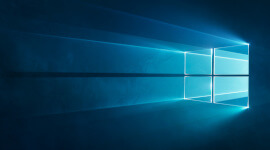Installation Instructions
ActFax Installation and Configuration
The installation and configuration of ActFax is done through a user-friendly setup program. The
software can also be installed by people with limited computer knowledge that are no IT experts.

Further informationen about the software can also be found in the online help and in the user's manual,
which is available for download through the download area on our website. If you have
questions or problems, feel free to contact us at any time.
How do I ...
Install ActFax

The installation of ActFax can be done on the operating systems Windows XP / 2003 / Vista /
2008 / 2012, 7, 8, 10, 11, 2016, 2019, 2022 and 2025. ActFax is available in 32-bit and in 64-bit. On 32-bit Windows
systems, you always need to install the 32-bit ActFax version. On 64-bit Windows systems, both, the 32-bit
and the 64-bit ActFax version can be used. We recommend to install the 64-bit ActFax version
on such systems. Even if you plan to send faxes from a UNIX or Linux system, the fax server itself always needs to be installed
on a Windows based system and not under UNIX or Linux.
To start the installation of ActFax, run the setup program from the
download area (file actfax_setup_en.exe or actfax_setup_x64_en.exe). When running
the installation from a CD-ROM, the setup is automatically started when you insert the CD. To install the trial version of
ActFax, enter the license key 00000-00000-00000-00000 in the setup. The trial version has no
limitations and all functions are available (a small demoversion watermark is printed at the end of each fax
page in that case then).
The setup program automatically detects and configures all connected modems during the installation. The fax server
is therefore available for operation right after the installation finished.
Access faxes from a computer in the network

The first time the fax client is started, the network is automatically scanned for available fax
servers. Just select your fax server from the list in that case. Normally there is just a single fax
server installed in a network, so the fax server is automatically pre-selected as the default setting.
Send faxes from Windows

More information about sending faxes and the automatic definition of the recipient of a fax in own
applications using data fields can also be found in the online help of the fax server or in the
user's manual, available for download in the download area.
Send faxes from Unix or Linux

Depending on your Unix system, follow these steps to install a LPD/LPR network printer to send fax jobs
to the fax server:
IBM RS/6000 (AIX)
- Login as user root.
- Start the system administrator program smit.
- Choose the menu Devices, Printer/Plotter, Manage Remote Printer, Client Services, Remote Printer Queues and Add a Remote Queue.
- Fill out the dialog box. In the field Destination Host enter the host name of the computer where the fax server has been installed. In the field Queue Name you can enter any printer name (i.e. "fax").
HP-9000 (HP/UX)
- Login as user root.
- Start the system administrator program sam.
- Choose the menu Printers and Plotters, Actions and Add Remote Printer.
- Fill out the dialog box. In the field Remote Printer Name enter the host name of the computer where the fax server has been installed. In the field Queue Name you can enter any printer name (i.e. "fax"). Also enable the option Remote Printer is on a BSD System there.
Other Unix systems (SCO Unix) and Linux
- To configure a network printer on such systems, have a look at the documentation of your Unix system. Usually a LPD/LPR printer can be created with an entry in the /etc/printcap file in that case. Entries in /etc/printcap are built in the following format:
printername:\ fax:\
:rm=hostname:\ :rm=192.168.0.1:\
:rp=queuename: :rp=fax:
On some Unix systems (i.e. SCO-Unix) it could also be required that the LPD/LPR protocol needs to be
activated before network printers can be used. In the case of SCO-Unix, this can be done with the Unix command
"mkdev rlp".
After the network printer has been configured on your Unix system, print jobs can be sent to the fax server
with the Unix command "lp". For example, to create a print job with "lp", one of the following Unix
commands can be used:
- lp -dprintername filename
- cat filename | lp -dprintername
With the Unix command "lpstat -t" or "lpstat -oprintername" the current status of the
network printer can be displayed.
ActFax automatically processes the printer commands of HP-LaserJet (PCL),
Epson-LQ, Postscript and PDF. The formatting of the print jobs sent to the fax server is preserved that way.
More information about the automatic definition of the recipient of a fax in a print job can be found
later in this chapter and in the online help of the fax server as well as in the user's manual, available
for download in the download area.
Send emails

The configuration of the email service on the fax server is very simple and you just need to configure
the host name or IP address of your mail server (SMTP server) and the authentication settings. If required,
it is also possible to automatically do a dialup connection to the Internet through RAS for connections to
the mail server.
Automatically set the recipient for a fax in my application

On Windows systems, data fields are normally written directly to the document or added as part of the
document name. On Unix and Linux systems, data fields can be added directly to the document
the same way as printer commands. The knowledge of complex programming techniques, like DDE or OLE, is not required
in that case, since data fields are a normal part of the document. The fax server automatically processes such
data fields and filters them out, so they are not visible in the final fax document.
For example to set the recipient's fax number for a fax, you just need to add the data field with the number 211
to the document. To set the subject of the fax, the data field with the number 307 is used. For example
to send a document with the subject Purchase Order #1234 to the fax number 800-123-4567,
add the following two data fields to the document at any position:
- @F211 800-123-4567@
- @F307 Purchase Order #1234@
When using data fields on a Windows system, you also need to take care to format the data fields with the
"ActiveFax" font, because otherwise the fax server does not detect and process them.
For print jobs that are not created through the Windows printer driver (i.e. from Unix or Linux),
no special formatting for data fields is required.
Detailed information about adding data fields to print jobs as well as a complete list with all data fields
can be found in the online help of the fax server and in the user's manual, available for download in the
download area.
You can also find an example for data fields used with Windows applications at \Program Files\ActiveFax\Server\Sample.rtf
(Windows WordPad document) on the fax server. The file \Program Files\ActiveFax\Server\Sample.txt is
an example for data fields and HP-Laserjet (PCL) printer commands used with documents not directly created through the Windows
printer driver (i.e. from Unix or Linux).